Last updated on
Discover the transformative power of altering your couch’s color with our easy-to-follow guide that revitalizes your living space in no time.
Are you tired of your old couch and looking for a way to spruce it up without breaking the bank? One easy solution is to change the color of your couch! Whether you want a bold pop of color or a subtle neutral tone, changing the color of your couch can completely transform the look and feel of your living space. In this article, we’ll walk you through some tips and tricks for changing your couch’s color without having to buy a brand new one.
So let’s get started!
Key takeaways:
- Assess your couch for damages and compatibility with color changes.
- Determine the material of your couch before selecting a dye or paint method.
- Choose a fabric that suits your style and consider durability and maintenance.
- Consider the overall aesthetic and practicality of different colors for your couch.
- Clean your couch thoroughly before starting the color-changing process.
Table of Contents
Assess Your Couch
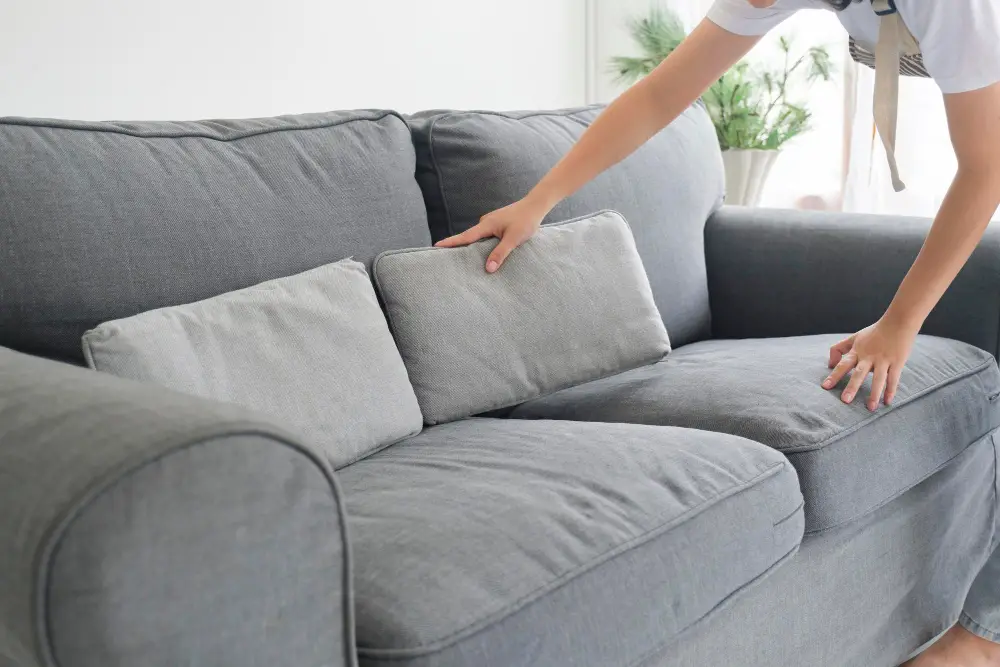
Take a close look at any stains, tears or other damage that may need to be repaired before proceeding with the color change. If there are significant damages that cannot be fixed easily, reupholstering might be a better option than trying to dye or paint over them.
Consider the style and shape of your couch when deciding on a new color. Some styles may not lend themselves well to certain colors or patterns.
For example, if you have an ornate Victorian-style sofa with intricate carvings and details in dark wood tones, bright neon colors might clash rather than complement its design.
Assessing your couch will help ensure that any changes made will enhance its overall appearance rather than detract from it.
Assess Material Type

Different materials require different methods and products for dyeing or painting. For example, leather couches cannot be dyed with fabric dyes, while cotton or linen fabrics can easily absorb dye.
To determine the material type of your couch, check the label underneath it or consult with a professional upholsterer if you’re unsure. Once you know what kind of material your couch is made from, you can move on to selecting an appropriate method for changing its color.
Assessing the material type will help ensure that you choose a safe and effective way to change your sofa’s color without damaging it in any way.
Choosing a Fabric
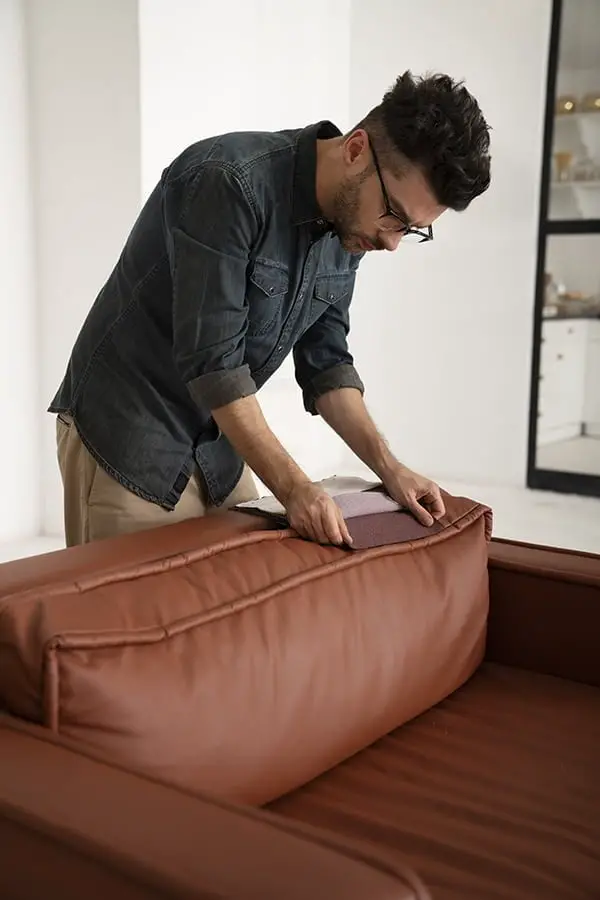
The type of fabric you choose will determine how well the dye or paint adheres to your couch and how long-lasting it will be. Some fabrics are easier to work with than others, so consider factors such as durability, texture, and breathability when making a decision.
For example, if you have pets or children who frequently use your couch, a durable and stain-resistant fabric like microfiber may be ideal. On the other hand, if you’re looking for something more luxurious that adds texture to your space while still being easy on maintenance then velvet could be an excellent choice.
It’s also important to keep in mind that certain fabrics require different types of dyes or paints for optimal results. For instance natural fibers like cotton can take up dye better than synthetic ones such as polyester which requires special upholstery paint instead.
Color Selection

When selecting a color for your couch, consider the overall aesthetic of the room. Do you want something bold and eye-catching or more subtle and neutral? If you’re unsure about which direction to take, try looking at inspiration photos online or in home decor magazines.
Another important factor to consider is how well the color will hold up over time. Lighter colors may show stains more easily than darker ones, so keep this in mind if you have kids or pets who are prone to making messes on furniture.
Clean Your Couch
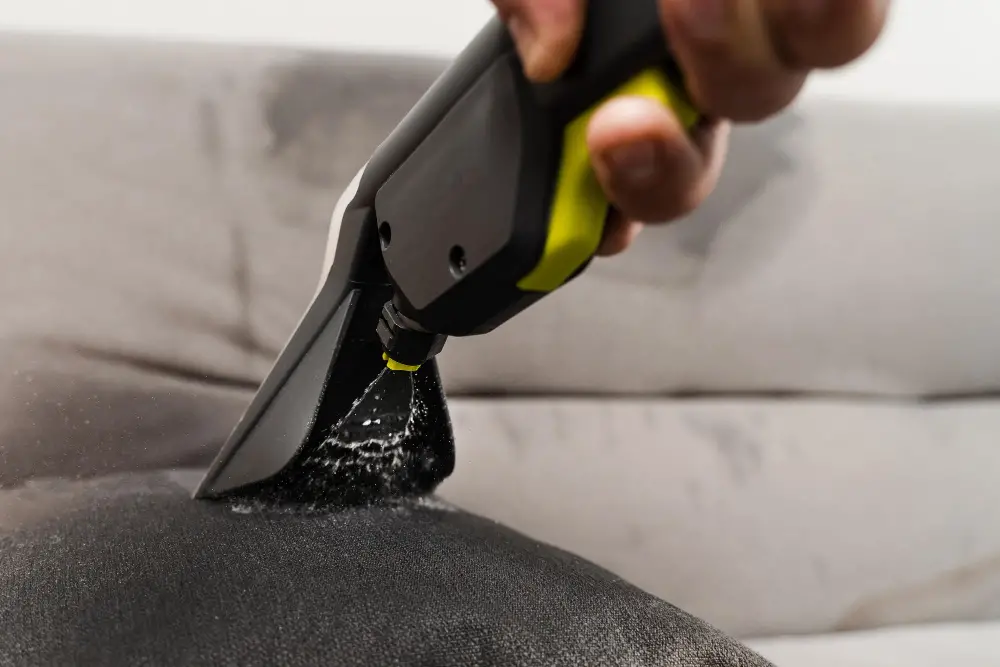
Dirt and grime can prevent dye or paint from adhering properly, leading to an uneven finish. Start by vacuuming your couch with a brush attachment to remove any loose dirt or debris.
Then use a fabric cleaner appropriate for the material type of your couch and follow the instructions carefully.
For leather upholstery, use a leather cleaner that is specifically designed for cleaning this type of material. Avoid using harsh chemicals such as bleach or ammonia on any kind of upholstery as they can damage the fabric fibers.
DIY Dye Techniques
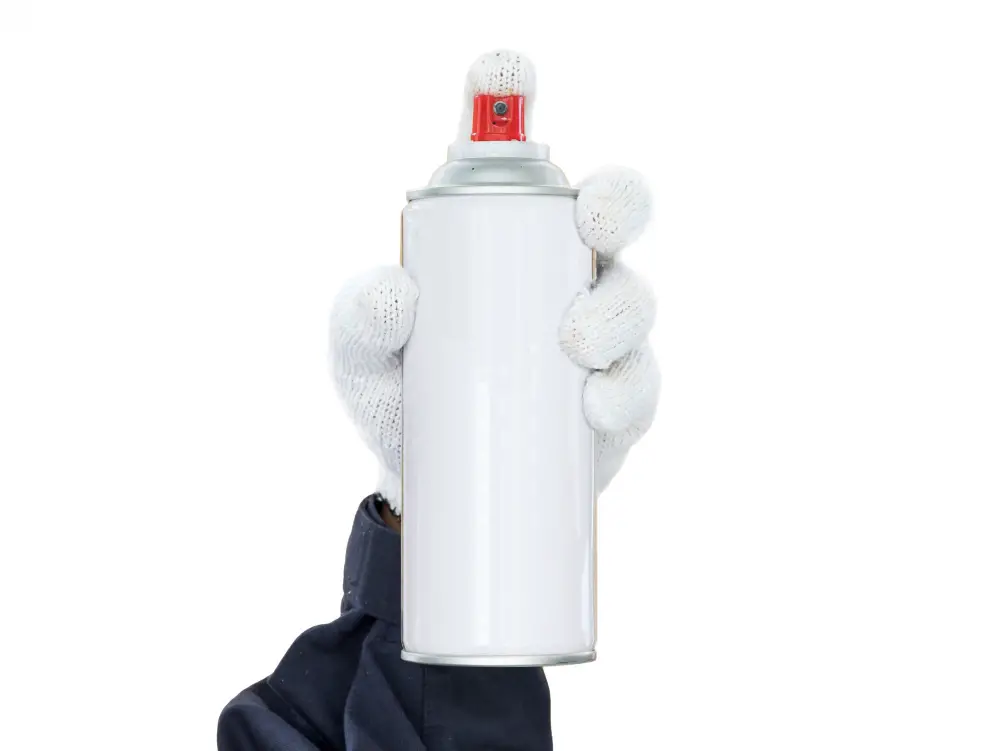
Dyeing your couch is an easy and cost-effective way of giving it a new lease on life. However, before you start dyeing, make sure that the fabric can be dyed and choose the right type of dye for your material.
ne popular method is using fabric spray paint or upholstery paint. These paints come in various colors and are designed specifically for use on fabrics like cotton or polyester blends.
They provide excellent coverage without leaving any residue behind.
Another technique involves using natural dyes such as tea or coffee to give your couch a vintage look while also being eco-friendly! Simply brew some strong tea or coffee and apply it directly onto the fabric with a brush until you achieve the desired shade.
Whichever method you choose, always follow instructions carefully when applying dyes as they can stain surrounding areas if not used correctly.
Upholstery Paint
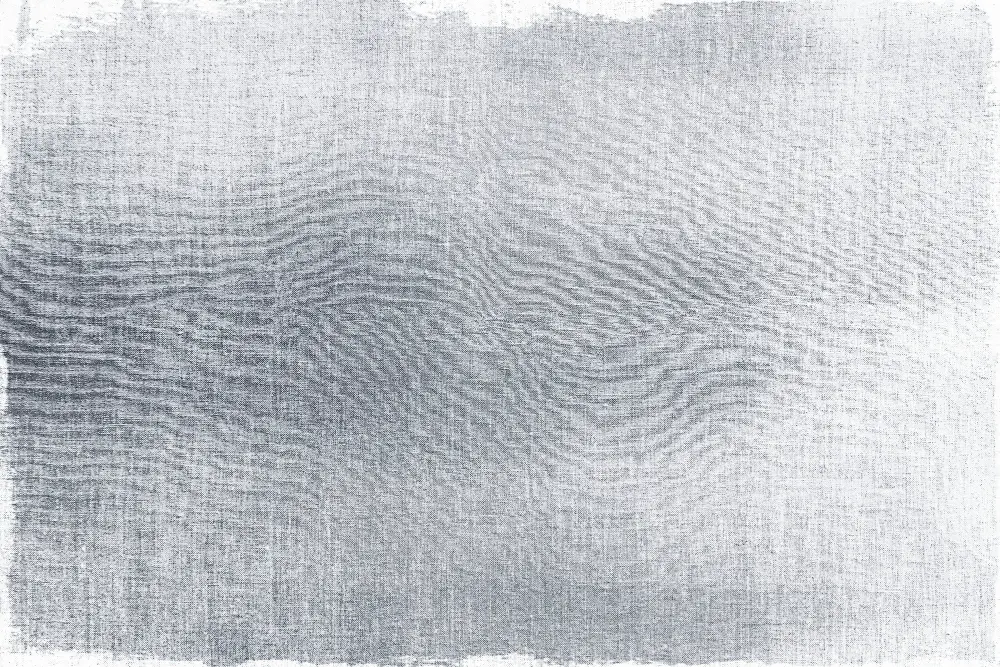
This type of paint is specially formulated for use on fabric and can be found at most craft stores or online retailers. Before using upholstery paint, make sure your couch’s material is compatible with the product by checking the label or doing a small patch test in an inconspicuous area.
To apply upholstery paint, start by cleaning your couch thoroughly and allowing it to dry completely. Then, use a spray bottle filled with water to dampen each section you plan on painting before applying thin coats of upholstery spray in even strokes across the surface.
It’s important not to oversaturate any one area as this can cause drips and uneven coverage. Allow each coat of paint ample time (usually 24 hours) before adding another layer until you achieve your desired shade.
Protect Surrounding Areas
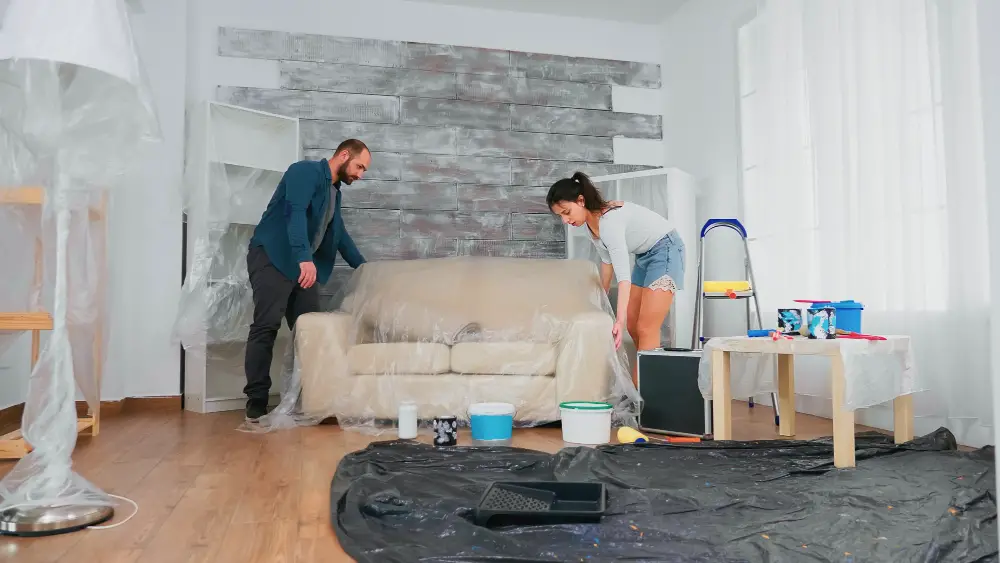
This will prevent any accidental spills or stains on your floors, walls, and other furniture pieces. You can use drop cloths or old sheets to cover the floor and nearby surfaces.
Make sure that everything is completely covered before you begin.
If you’re using a spray paint for upholstery technique, consider covering windows with plastic sheeting as well as wearing a mask while spraying to avoid inhaling fumes.
Apply First Coat

Before starting, make sure that you have all the necessary tools and materials such as a brush or spray gun for applying the dye/paint, gloves to protect your hands from staining and a drop cloth to cover surrounding areas.
Start by testing on an inconspicuous area of your couch before proceeding with painting/dyeing. This will help ensure that there are no adverse reactions between the fabric and paint/dye.
When ready, begin applying thin coats of paint or dye in long strokes following one direction only. Avoid going back over areas already painted as this can cause unevenness in color distribution.
Allow each coat to dry completely before adding another layer until you achieve full coverage. Depending on how dark/light you want your couch color change; two-three coats should suffice for most paints while dyes may require more layers depending on their concentration level.
Add Another Coat
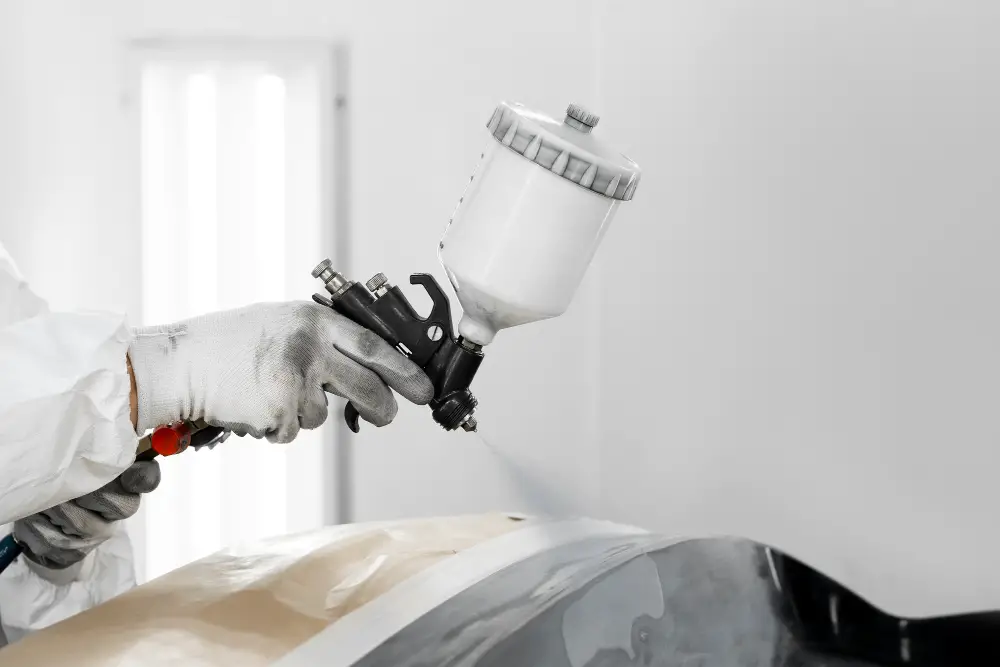
This will ensure that the color is even and smooth. Once your first coat has dried, assess whether you need to add another layer of paint or dye.
If so, apply a second thin and even layer in the same manner as before.
It’s essential not to rush this process; otherwise, your couch may end up looking patchy or unevenly colored. Allow each coating time to dry thoroughly before applying additional layers until you achieve your desired shade.
Adding multiple coats can also help protect against wear and tear over time by creating a more durable finish on your couch fabric.
Reupholstering
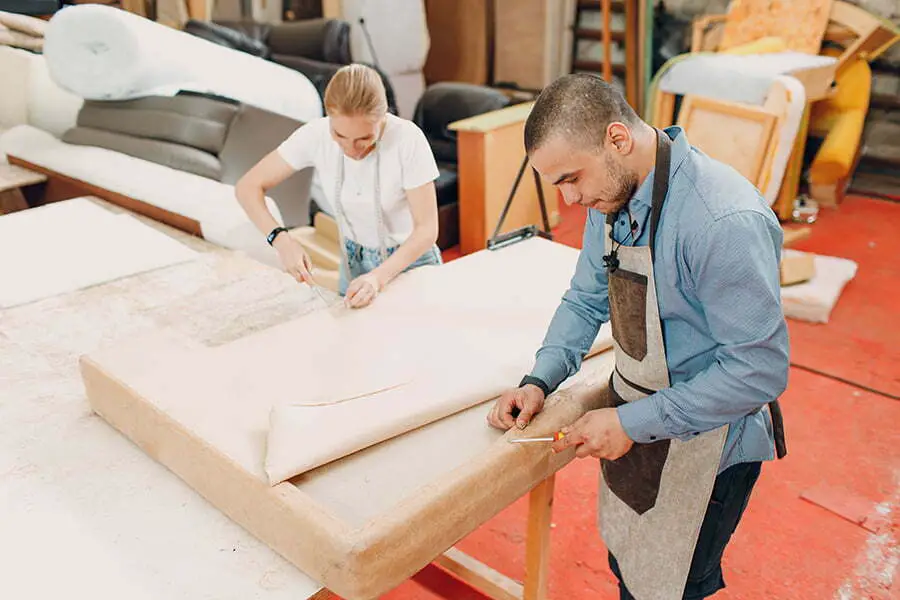
Reupholstering involves removing the old fabric and replacing it with new fabric of your choice. This process can be time-consuming and requires some DIY skills, but it’s worth it if you want a completely new look for your couch.
To start, measure your couch carefully so that you know how much fabric to purchase. Then remove any dust covers or staples holding down the original upholstery before taking off the old material itself.
Once all of this has been done, refinish any exposed wood on the frame before putting on new upholstery in sections starting from one end and working towards another until everything is covered up again neatly without wrinkles or gaps between pieces!
Measure Your Couch

This will ensure that you have enough fabric for the job and that the new upholstery fits perfectly. To get started, grab a measuring tape and follow these simple steps:
- Measure the length of your couch from one armrest to another.
- Measure the width of your couch from front to back.
- Measure the height of each cushion separately.
Make sure to write down all measurements accurately so that you can refer back to them later when selecting fabric or ordering custom upholstery pieces.
Remove Dust Cover
The dust cover is a piece of fabric that covers the bottom of your couch and protects it from dirt and debris. To remove the dust cover, turn your couch over so that its underside is facing up.
Use a pair of scissors or a seam ripper to carefully cut away any staples or tacks holding the dust cover in place.
Be sure to save any pieces you cut off as they can be used as templates for cutting new fabric later on in this process. Once all staples have been removed, gently pull off the old dusty cloth until it comes free from underneath.
Remove Original Upholstery
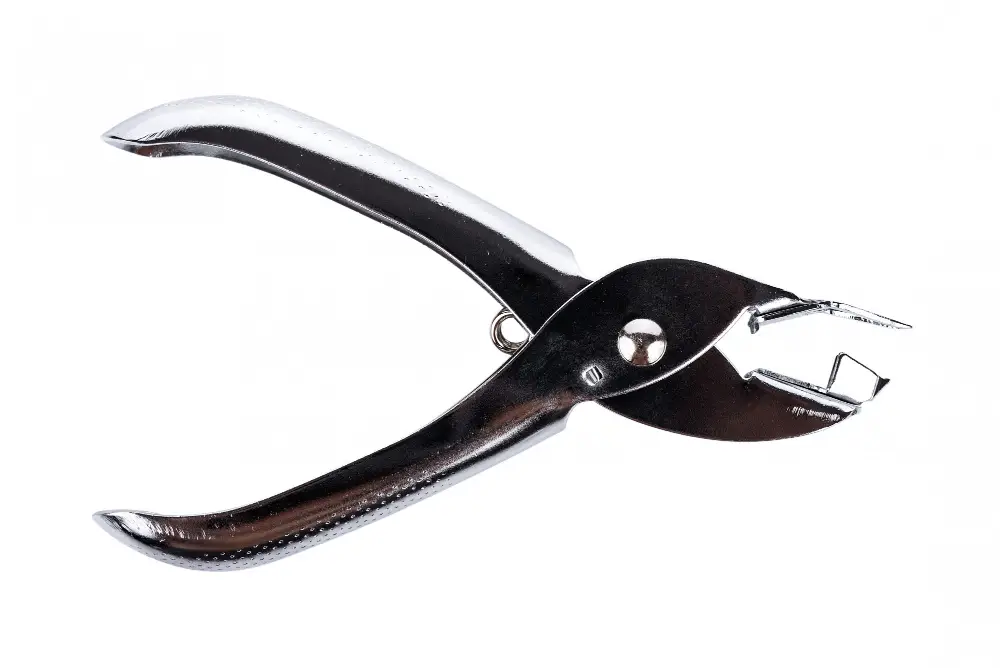
This can be a daunting task, but with some patience and careful attention to detail, it is possible to do on your own.
Firstly, use pliers or a staple remover tool to carefully remove all of the staples holding the old upholstery in place. Be sure not to damage any of the underlying foam or batting as you work.
Next, take note of how each piece was attached so that you can replicate this when attaching your new fabric. You may want to take photos or make sketches for reference later on.
Once all pieces are removed from your couch frame and laid out flat on top of one another (in order), label them accordingly before discarding them so that they will be easy for reupholstering later on.
Refinish Couch Frame

This process involves sanding down the old finish and applying a new one to give your couch an entirely new look. Before starting this project, make sure you have all the necessary tools such as sandpaper, wood stain or paint, and brushes.
Firstly remove any cushions from the sofa before beginning work on it. Then use sandpaper to strip off any existing varnish or paint from the wooden frame of your couch until it’s smooth enough for painting/staining.
Once sanded down completely wipe away dust with a damp cloth then let dry thoroughly before applying either wood stain or paint depending on what type of finish you want – if using wood stain apply in thin layers allowing each coat time to dry between applications; if using paint apply two coats letting each layer dry completely before adding another one.
Put Upholstery On
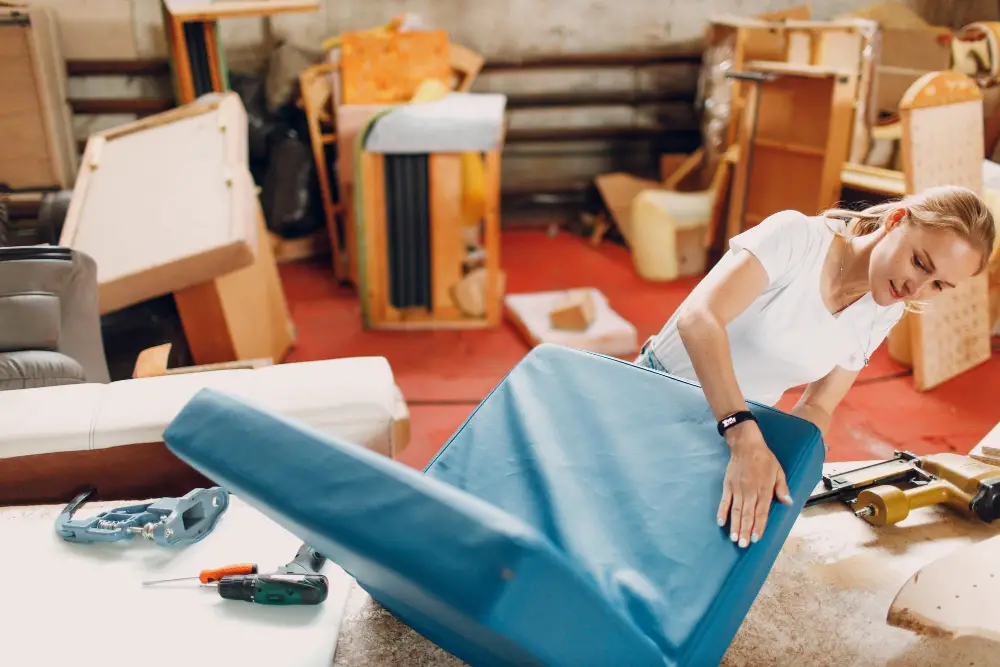
This can be a bit tricky, but with patience and attention to detail, you can achieve professional-looking results.
Firstly, lay out your fabric over the couch frame so that it covers all areas of the couch. Make sure there is enough excess fabric around each section of your sofa for tucking in later.
Next up is stapling! Start by pulling one side of the fabric tight across one end of your sofa and staple it into place at regular intervals along this edge. Repeat this process on all sides until everything is secure.
Now comes an important step: pleating or gathering any extra material where needed before stapling down again tightly against corners or curves (this will help avoid wrinkles).
Trim off any excess material from around edges using scissors or a sharp knife before tucking in remaining bits under cushions as necessary – voila! Your newly upholstered couch looks brand new again!
Put Dust Cover Back On
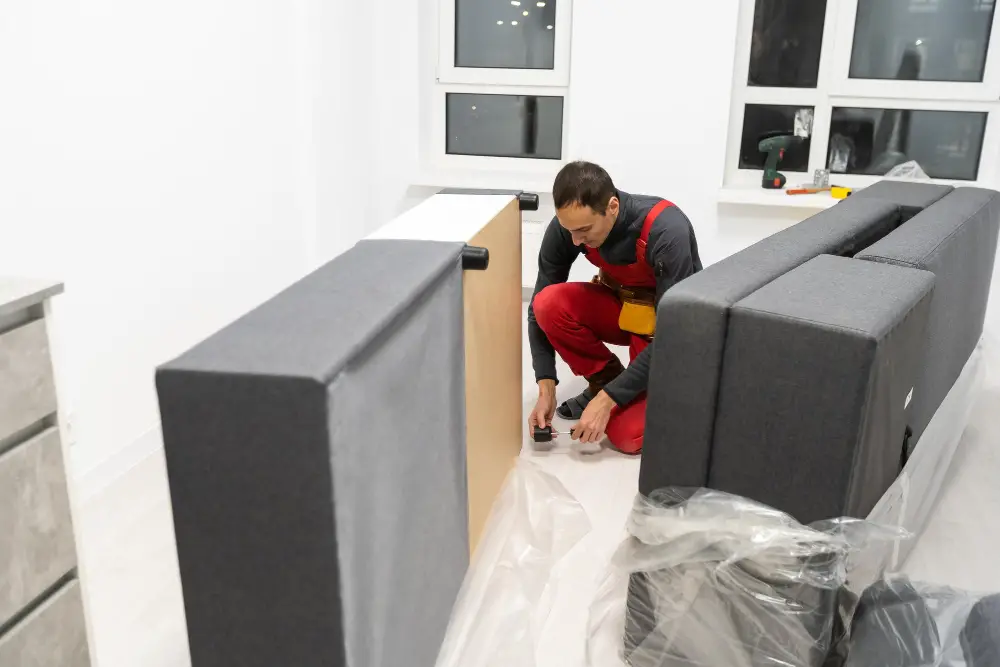
This is an essential step that will help protect your new upholstery from dust and debris. The dust cover is a thin layer of fabric that covers the bottom of the couch frame and prevents dirt from getting inside.
To put the dust cover back on, start by laying it flat on a clean surface with its wrong side facing up. Then, position it over the bottom of your newly upholstered couch frame so that there’s enough excess fabric to wrap around each edge.
Next, use a staple gun or upholstery tacks to secure one corner in place before moving onto another corner diagonally opposite. Continue this process until all four corners are secured tightly in place.
Fold any remaining excess fabric under itself neatly along each edge before stapling or tacking them down securely as well.
Add Trim
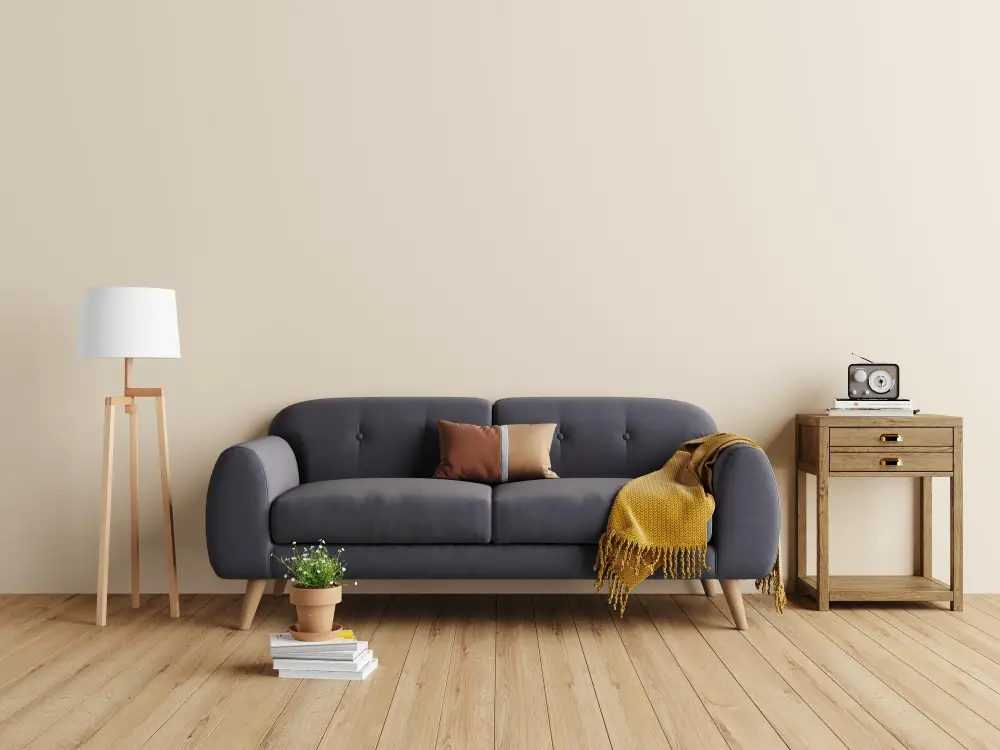
There are many different types of trims you can choose from, including piping, fringe, tassels or even nailhead trim. When selecting the right type of trim for your couch, consider the overall look and feel you want to achieve in your living space.
Once you have chosen the perfect trim for your couch, it’s time to start adding it on! Begin by measuring out how much trimming material you will need based on the dimensions of each section that needs trimming. Then cut out pieces accordingly.
Next up is attaching them onto their respective sections using either glue or sewing depending on what kind of material they are made from (some materials may require more heavy-duty methods). Be sure not only attach them securely but also evenly spaced apart so that they don’t bunch up in certain areas.
FAQ
How do you change the color of a fabric sofa?
To change the color of a fabric sofa, clean it first, dampen the fabric with water, apply fabric paint using a sponge or brush, let it dry, and then apply a second coat if necessary.
Can I paint my fabric couch?
Yes, you can paint your fabric couch, but it is best to choose a tight-weave fabric and go from a light to dark color for optimal results.
Can sofa fabric be changed?
Yes, sofa fabric can be changed by selecting a new fabric of your choice, even drop cloth, and testing with a small piece before committing to the larger required piece for the couch.
What are the best upholstery dyeing methods to alter sofa colors?
The best upholstery dyeing methods to alter sofa colors include using fabric spray paint, upholstery fabric paint, or a fabric dye and water solution applied with a sponge or a spray bottle.
Are there any long-lasting couch color-changing alternatives to reupholstering?
Yes, long-lasting couch color-changing alternatives to reupholstering include using furniture slipcovers or fabric paint to update the appearance.
Can slipcovers be used effectively to modify the appearance and color of a couch?
Yes, slipcovers can effectively modify the appearance and color of a couch by providing a new look and protecting the furniture.





